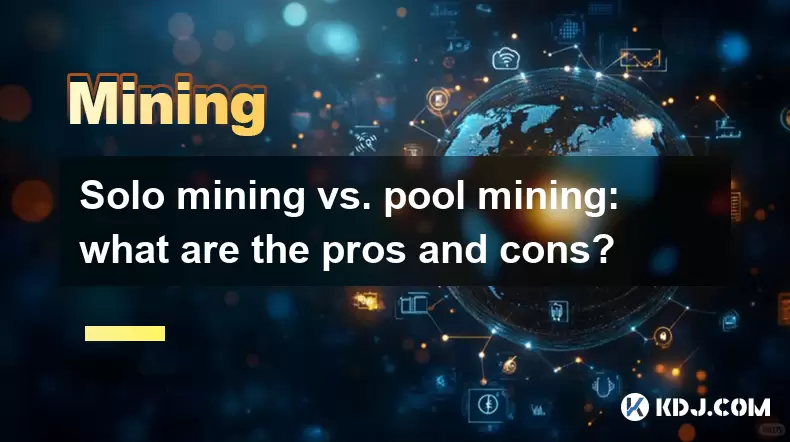-
 Bitcoin
Bitcoin $114200
0.00% -
 Ethereum
Ethereum $3637
0.56% -
 XRP
XRP $2.950
-2.01% -
 Tether USDt
Tether USDt $0.9999
0.02% -
 BNB
BNB $761.0
0.55% -
 Solana
Solana $164.1
-1.38% -
 USDC
USDC $0.9999
0.02% -
 TRON
TRON $0.3332
0.36% -
 Dogecoin
Dogecoin $0.2012
-0.52% -
 Cardano
Cardano $0.7261
-1.41% -
 Hyperliquid
Hyperliquid $37.62
-2.13% -
 Stellar
Stellar $0.3930
-2.65% -
 Sui
Sui $3.441
-0.16% -
 Bitcoin Cash
Bitcoin Cash $563.8
0.70% -
 Chainlink
Chainlink $16.50
0.09% -
 Hedera
Hedera $0.2424
-0.14% -
 Ethena USDe
Ethena USDe $1.001
0.01% -
 Avalanche
Avalanche $22.20
0.00% -
 Litecoin
Litecoin $118.0
-2.48% -
 UNUS SED LEO
UNUS SED LEO $8.991
0.12% -
 Toncoin
Toncoin $3.195
-3.87% -
 Shiba Inu
Shiba Inu $0.00001217
0.12% -
 Uniswap
Uniswap $9.674
-0.21% -
 Polkadot
Polkadot $3.633
1.00% -
 Monero
Monero $295.3
-0.82% -
 Dai
Dai $0.9999
0.00% -
 Bitget Token
Bitget Token $4.321
-0.41% -
 Cronos
Cronos $0.1392
0.73% -
 Pepe
Pepe $0.00001027
-0.89% -
 Aave
Aave $258.5
0.32%
How to calculate the income of Filecoin mining?
Filecoin mining profitability depends on storage capacity, quality, network demand, hardware speed, FIL price, and operational costs; no single formula exists for precise income calculation.
Mar 26, 2025 at 01:15 am

How to Calculate the Income of Filecoin Mining?
Filecoin mining, unlike Bitcoin mining, involves storing data rather than solving complex mathematical problems. Therefore, calculating its profitability requires understanding several interconnected factors. It's not a simple equation, but rather a complex interplay of variables that fluctuate constantly. Let's break down the key components.
First, we need to understand the concept of storage power. Your mining income is directly tied to the amount of usable storage you provide to the Filecoin network. This is measured in GiB (gibibytes) or PiB (pebibytes). More storage generally translates to higher potential earnings. However, simply having storage isn't enough.
The quality and availability of your storage are critical. Filecoin's network prioritizes reliability. Frequent outages or data loss will result in penalties and reduced rewards. Your hardware's performance, specifically its read and write speeds, also affects your earning potential. Faster hardware can handle more requests and earn more.
Next, consider the network's storage demand. The price of FIL (Filecoin's cryptocurrency) fluctuates based on market forces, influencing your earnings. Higher demand for storage leads to higher prices for FIL, increasing your potential income. Conversely, lower demand will reduce your earnings.
The network's algorithm also plays a significant role. Filecoin uses a complex consensus mechanism that distributes rewards based on several factors, including storage capacity, quality, and network participation. This means your share of the rewards is dynamic and not fixed.
Let's examine the crucial factors that influence your income:
- Storage Capacity: The amount of storage you provide directly impacts your potential earnings. More storage generally means more rewards.
- Storage Quality: Maintaining high data availability and reliability is paramount. Penalties for poor performance can significantly reduce your income.
- Network Demand: Higher demand for storage usually translates to higher FIL prices and increased rewards.
- Hardware Performance: Faster storage hardware can handle more requests, increasing your earning potential.
- FIL Price: The price of FIL directly affects your revenue. A higher FIL price increases your income, and vice versa.
- Network Participation: The overall activity and size of the Filecoin network influence your share of the rewards.
Calculating your potential income requires a multifaceted approach. You need to consider all the variables mentioned above. There isn't a single formula; rather, you need to estimate based on current market conditions and your specific hardware setup. Many online calculators and resources exist that attempt to estimate potential income based on inputted parameters, but these should be treated as estimates only, not guarantees.
The complexity of calculating Filecoin mining income stems from the dynamic nature of the network and market conditions. The rewards are not fixed and change constantly. Accurate prediction is nearly impossible due to the constant fluctuations.
Estimating your Filecoin mining income requires considering your hardware's specifications, specifically its storage capacity and speed. The quality and reliability of your storage are also crucial factors. The current market price of FIL is another essential element in determining your potential profitability. Finally, remember that network demand and the algorithm’s distribution mechanism influence your share of the total rewards.
You should also consider operational costs, such as electricity consumption, hardware maintenance, and internet connectivity. These costs can significantly impact your overall profitability. Failure to account for these expenses will lead to an inaccurate assessment of your potential income.
Many online calculators and tools attempt to provide estimates, but these should be used cautiously. They often rely on assumptions that may not reflect real-world conditions. Always conduct thorough research and consider your specific circumstances before investing in Filecoin mining.
The unpredictability of the Filecoin network makes it difficult to provide a precise formula for calculating income. The reward system is complex and dynamic, influenced by numerous variables beyond your direct control. Regular monitoring of the market and network conditions is crucial for managing expectations.
Remember that the Filecoin network is constantly evolving. Updates and changes to the protocol can impact your mining income. Staying informed about these developments is essential for maximizing your profitability. Thorough research and a realistic understanding of the risks are vital before engaging in Filecoin mining.
Frequently Asked Questions:
Q: What is the minimum storage requirement for Filecoin mining?
A: There's no minimum storage requirement explicitly stated by the Filecoin protocol. However, to be competitive and earn meaningful rewards, you need a substantial amount of storage, likely in the terabyte range or higher, depending on market conditions.
Q: How much can I earn from Filecoin mining?
A: It's impossible to provide a definitive answer. Earnings depend heavily on factors like storage capacity, hardware performance, network demand, FIL price, and operational costs. Online calculators provide estimates, but they're not guarantees.
Q: What hardware is needed for Filecoin mining?
A: You need reliable storage hardware (HDDs or SSDs), a robust server, and a stable internet connection. The specific requirements depend on your desired storage capacity and performance goals.
Q: Are there any upfront costs associated with Filecoin mining?
A: Yes, you'll need to invest in hardware, potentially software, and pay for electricity and internet connectivity. These costs should be factored into your profitability calculations.
Q: How often are Filecoin mining rewards paid out?
A: The frequency of payouts depends on the Filecoin network and your contribution. Rewards are not paid out on a fixed schedule but are distributed according to the network’s consensus mechanism.
Q: What are the risks associated with Filecoin mining?
A: Risks include hardware failures, network volatility, fluctuating FIL price, and changes to the Filecoin protocol. Thorough research and risk assessment are crucial.
Q: How can I track my Filecoin mining income?
A: You can monitor your income through the Filecoin mining software and various blockchain explorers that track your storage contributions and rewards.
Disclaimer:info@kdj.com
The information provided is not trading advice. kdj.com does not assume any responsibility for any investments made based on the information provided in this article. Cryptocurrencies are highly volatile and it is highly recommended that you invest with caution after thorough research!
If you believe that the content used on this website infringes your copyright, please contact us immediately (info@kdj.com) and we will delete it promptly.
- Ethereum, Transaction Volumes, and SEC Staking: Navigating the Regulatory Landscape
- 2025-08-06 22:30:13
- Crypto, Tokens, and Metrics: Navigating the New Frontier
- 2025-08-06 23:09:22
- Crypto Market Buzz: PROVE Surges as Coinbase, Binance List Token
- 2025-08-06 22:30:13
- BlockDAG, Crypto, and Binance Coin: The Hottest Trends You Can't Ignore
- 2025-08-06 23:50:13
- BlockSack Who? Base Network and Layer 2s Shake Up the Crypto Scene
- 2025-08-06 23:10:13
- DOGE, SHIB, and Remittix ROI: Shifting Sands in the Crypto Landscape
- 2025-08-06 23:50:13
Related knowledge

What are the differences between mining on Windows vs. Linux?
Aug 06,2025 at 11:29pm
Overview of Cryptocurrency Mining PlatformsCryptocurrency mining involves using computational power to solve complex cryptographic puzzles and validat...

Can you mine cryptocurrency using solar power?
Aug 07,2025 at 12:00am
Understanding the Basics of Cryptocurrency MiningCryptocurrency mining involves validating transactions on a blockchain network by solving complex cry...

How to build a mining rig inside a PC case?
Aug 06,2025 at 11:01pm
Understanding the Basics of a Mining Rig in a PC CaseBuilding a mining rig inside a PC case involves transforming a standard computer chassis into a d...

How to set up a mining farm with multiple rigs?
Aug 07,2025 at 12:38am
Understanding the Basics of a Multi-Rig Mining FarmSetting up a mining farm with multiple rigs begins with understanding the core components involved ...

How to use a server PSU for a crypto mining rig?
Aug 06,2025 at 08:39pm
Understanding Server PSUs and Their Relevance to Crypto MiningCrypto mining rigs demand stable, high-wattage power supplies to run multiple GPUs effic...

Solo mining vs. pool mining: what are the pros and cons?
Aug 06,2025 at 08:15pm
Understanding Solo Mining in CryptocurrencySolo mining refers to the process where an individual miner attempts to solve a block on their own without ...

What are the differences between mining on Windows vs. Linux?
Aug 06,2025 at 11:29pm
Overview of Cryptocurrency Mining PlatformsCryptocurrency mining involves using computational power to solve complex cryptographic puzzles and validat...

Can you mine cryptocurrency using solar power?
Aug 07,2025 at 12:00am
Understanding the Basics of Cryptocurrency MiningCryptocurrency mining involves validating transactions on a blockchain network by solving complex cry...

How to build a mining rig inside a PC case?
Aug 06,2025 at 11:01pm
Understanding the Basics of a Mining Rig in a PC CaseBuilding a mining rig inside a PC case involves transforming a standard computer chassis into a d...

How to set up a mining farm with multiple rigs?
Aug 07,2025 at 12:38am
Understanding the Basics of a Multi-Rig Mining FarmSetting up a mining farm with multiple rigs begins with understanding the core components involved ...

How to use a server PSU for a crypto mining rig?
Aug 06,2025 at 08:39pm
Understanding Server PSUs and Their Relevance to Crypto MiningCrypto mining rigs demand stable, high-wattage power supplies to run multiple GPUs effic...

Solo mining vs. pool mining: what are the pros and cons?
Aug 06,2025 at 08:15pm
Understanding Solo Mining in CryptocurrencySolo mining refers to the process where an individual miner attempts to solve a block on their own without ...
See all articles

























































































